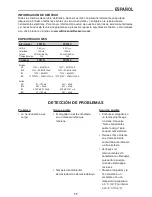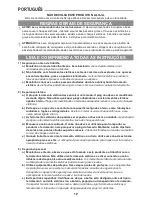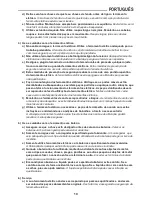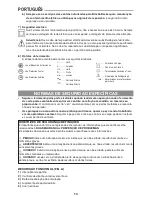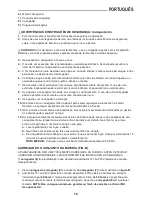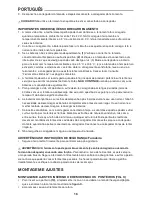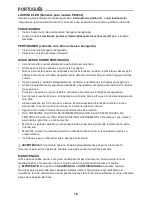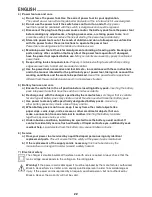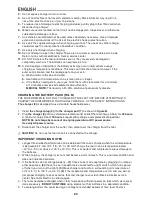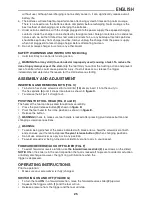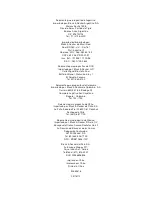
without use). Although overcharging is not a safety concern, it can significantly reduce overall
battery life.
6. The batteries will reach optimum performance after being cycled 5 times during normal usage.
There is no need to run the batteries down completely before recharging. Normal usage is the
best method of discharging and recharging the batteries.
7. Under certain conditions, with the charger plugged into the power supply, the exposed charging
contacts inside the charger can be shorted by foreign material. Foreign materials of a conductive
nature such as, but not limited to, steel wool, aluminum foil, or any buildup of metallic particles
should be kept away from charger cavities. Always unplug the charger from the power supply
when not plugged into tool. Unplug charger before attempting to clean.
8. Do not immerse charger in water or any other liquid.
SAFETY WARNINGS AND INSTRUCTIONS: Drilling
•
Hold tool firmly to control its twisting action.
WARNING! Tool may stall (if overloaded or improperly used) causing a twist. To reduce the
risk of injury always expect the stall.
Grip the tool firmly to control the twisting action and prevent
loss of control which could cause personal injury. If a stall does occur, release the trigger
immediately and determine the reason for the stall before re-starting.
ASSEMBLY AND ADJUSTMENT
INSERTING AND REMOVING BITS (FIG. C)
•
To install a hex shank screwdriver bit or drill bit
(10)
simply insert it into the cavity in
the hex spindle
(6)
until it snaps into place as shown in
figure C.
•
To remove the bit pull it straight out.
PIVOTING THE TOOL HEAD (FIG. D and E)
The head of the tool can be pivoted for optimum versatility.
•
Press the pivot release button
(3)
shown in
figure D.
•
Pivot the tool head to the inline position as shown in
figure E.
•
Release the button.
WARNING!
Check to make sure tool handle is locked after pressing pivot release button and
changing screwdriver positions.
WARNING:
•
To avoid being pinched at the areas indicated with black arrows, hold the screwdriver at both
ends and use your thumb to depress
the pivot release button (3)
when changing positions.
•
Do not use screwdriver as a pry bar in any position.
•
To avoid screwdriver being turned on accidentally, do not carry in your pocket.
FORWARD/REVERSE/LOCK OFF SLIDER (FIG. F)
•
To select forward or reverse rotation, use
the forward/reverse slider (2)
(see arrows on the slider).
NOTE:
When the slider is in the central position the tool is locked off to prevent accidental actuation
or battery discharge. However, the light ring will illuminate when the
trigger is depressed.
OPERATING INSTRUCTIONS
Prior to operation:
•
Make sure your screwdriver is (fully) charged.
SWITCHING ON AND OFF (FIGURE G)
•
To turn the tool
ON
in a forward direction, move the forward/reverse slider
(2)
upward.
•
Squeeze the trigger switch
(1)
and the tool will run.
•
Release pressure from the trigger and the tool will stop.
25
ENGLISH

